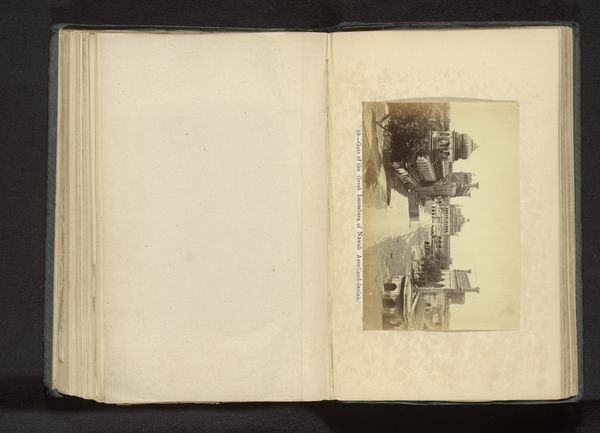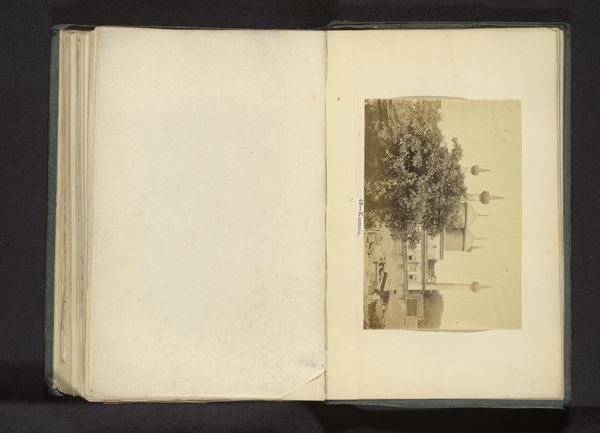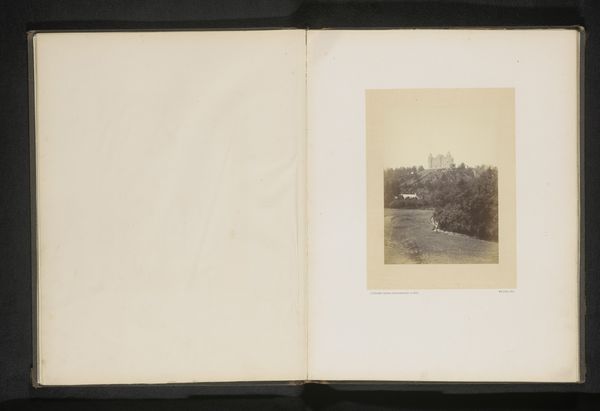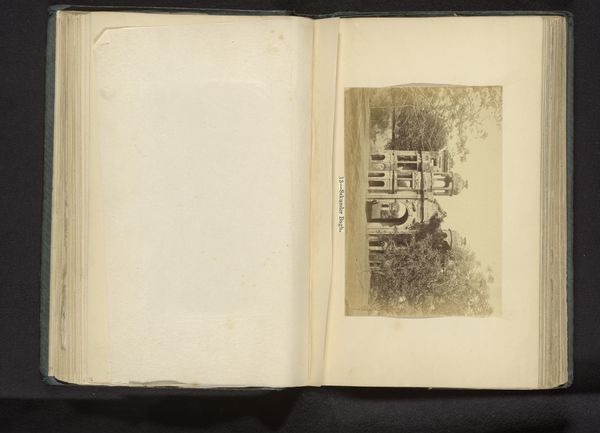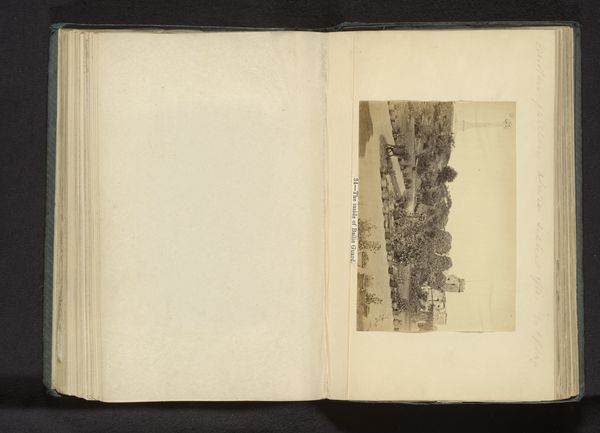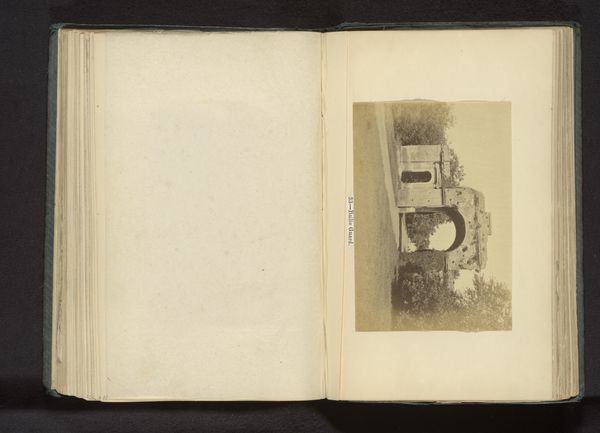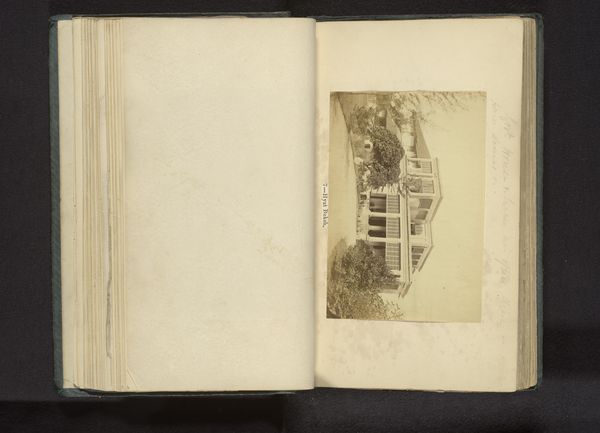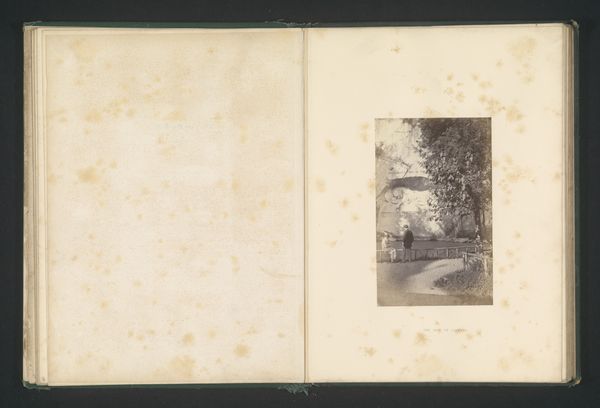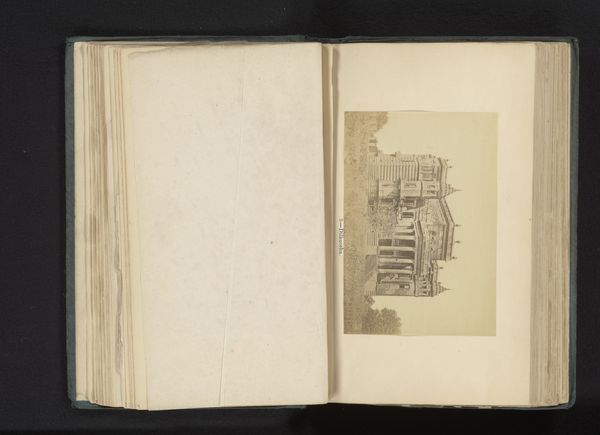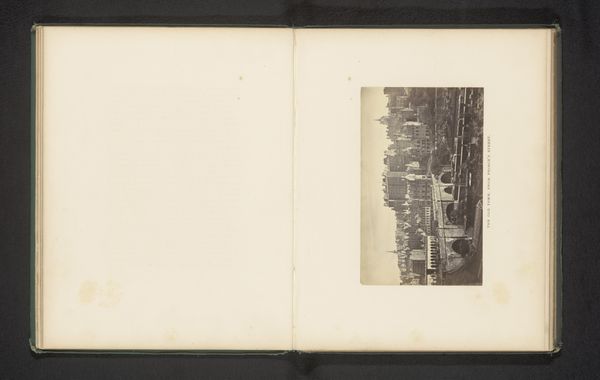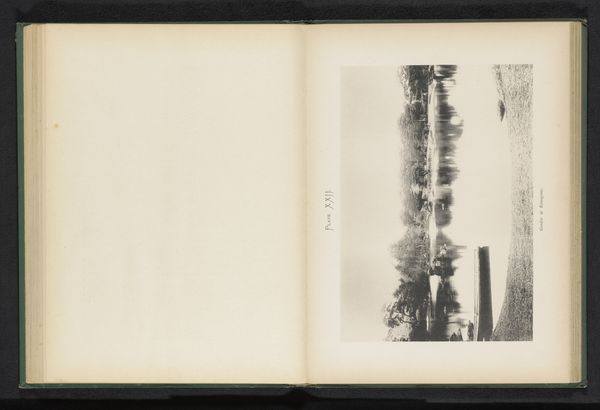
print, photography, site-specific, albumen-print
# print
#
landscape
#
photography
#
orientalism
#
site-specific
#
islamic-art
#
albumen-print
Dimensions: height 154 mm, width 105 mm
Copyright: Rijks Museum: Open Domain
This is a photograph of the Monument voor Henry Havelock in Lucknow, taken by Darogha Ubbas Alli. The sepia tones of this image give a sense of faded grandeur, fitting for its subject. But think about the act of photography itself in the 19th century. This wasn't just a snapshot. It involved laborious preparation of glass plates, careful timing of exposures, and chemical development. The result was a physical object, a paper print, that could be reproduced, collected in albums, and circulated widely. Consider the social context. Photography in colonial India was often used to document landscapes, architecture, and people, reinforcing a sense of imperial power. This image is both a record of a monument and a product of colonial exchange. It speaks to how technology and representation were intertwined with the power dynamics of the time. It's through considering the materiality and the making of this photograph that we can begin to see the layers of history embedded within it, challenging the notion of photography as a purely objective medium.
Comments
No comments
Be the first to comment and join the conversation on the ultimate creative platform.
